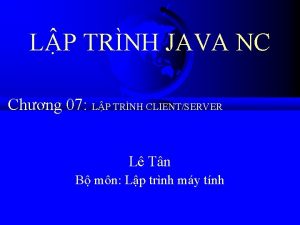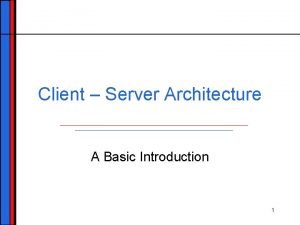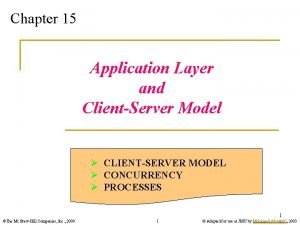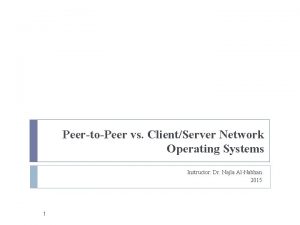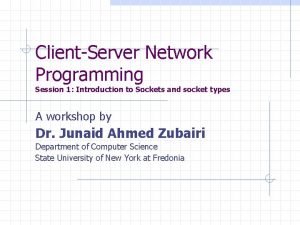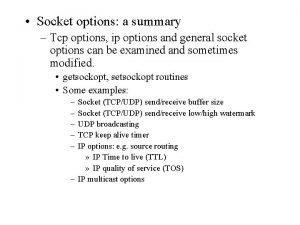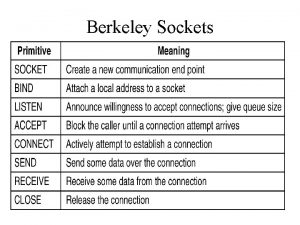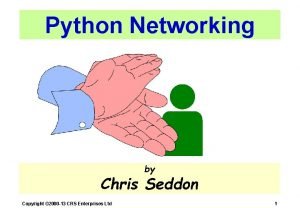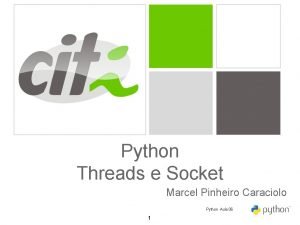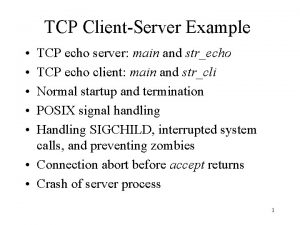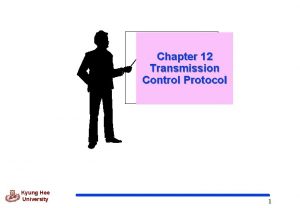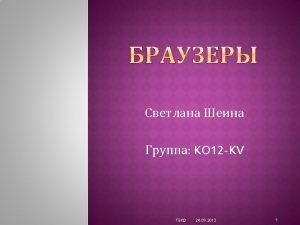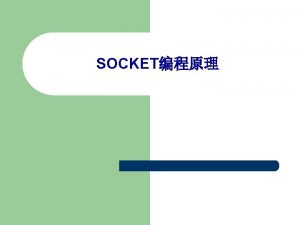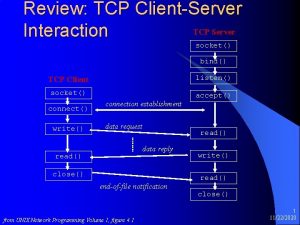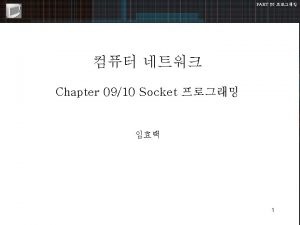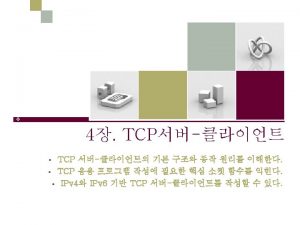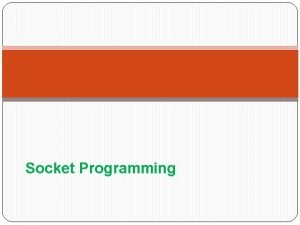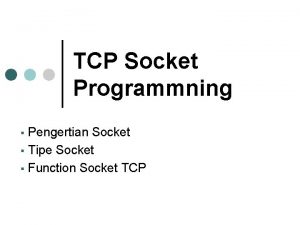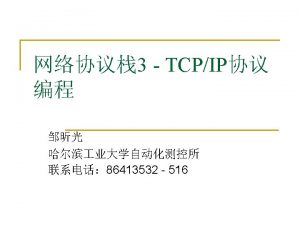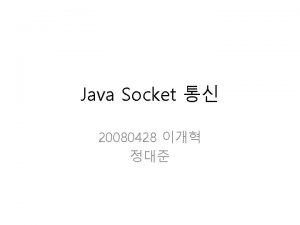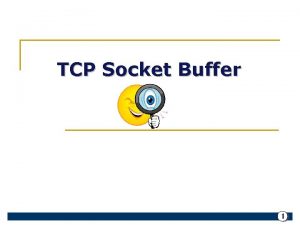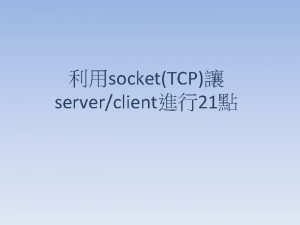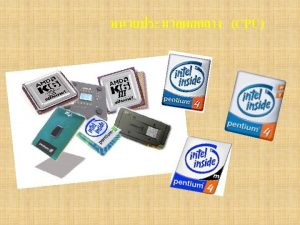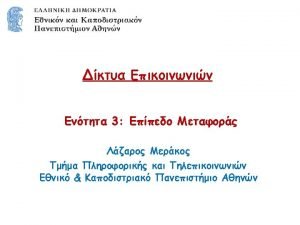IE Firefox TCP ClientServer Interaction TCP Server socket














- Slides: 14

IE

Firefox


TCP Client-Server Interaction TCP Server socket() bind() TCP Client listen() socket() accept() connect() write()/send() connection establishment data request read()/recv() data reply write()/send() read()/recv() close() end-of-file notification read() close() from UNIX Network Programming Volume 1, figure 4. 1

Include Headers • #include <sys/socket. h> • #include <netinet/in. h> • #include <unistd. h> • #include <netdb. h>

Create a socket // declare a socket file descriptor int listenfd; listenfd = socket( AF_INET, SOCK_STREAM, 0 );

Bind a socket to an address // declare a int for bind()’s result int bindres; // declare a structure for address struct sockaddr_in proxyaddr; // initialize the structure memset(&proxyaddr, 0, sizeof(proxyaddr)); proxyaddr. sin_family = AF_INET; proxyaddr. sin_addr. s_addr = htonl( INADDR_ANY ); proxyaddr. sin_port = htons( 3128 ); //bind listenfd to bindres = bind( listenfd, (struct sockaddr *)&proxyaddr, sizeof( proxyaddr ));

Listen to the socket & Accept when someone connect listen( listenfd, 5000 ); while(1) { connfd = accept( listenfd, (struct sockaddr *)NULL, NULL ); // do things like read and write with connfd doit(); close(connfd); } close(listenfd);

What we have to do doit() { // 1. read request from the client // 2. parse request // 3. build another connection to the server // 4. send request to the server // 5. read response from the server // 6. close connection with the server // 7. parse response // 8. send response to the client }

How to read? • Use read() – read( fd, buf, strlen( buf ) ); • Use recv() – recv( fd, buf, strlen( buf ), 0 ); int fd = socket(…); char buf[1024]; or char *buf;

How to write? • Use write() – write( fd, buf, strlen( buf ) ); • Use send() – send( fd, buf, strlen( buf ), 0 ); int fd = socket(…); char buf[1024]; or char *buf;

How to connect to the server? int servfd = socket(…); connect( servfd, ( struct sockaddr * ) &servaddr, sizeof( servaddr ) );

HTTP Request GET http: //network 2006. csie. org/index. html HTTP/1. 0 Accept: image/gif, image/x-xbitmap, image/jpeg, image/pjpeg, application/x-shockwave-flash, application/vnd. ms-excel, application/vnd. ms-powerpoint, application/msword, */* Accept-Language: zh-tw User-Agent: Mozilla/4. 0 (compatible; MSIE 6. 0; Windows NT 5. 1; SV 1; (R 1 1. 3); . NET CLR 1. 1. 4322) Host: network 2006. csie. org Proxy-Connection: Keep-Alive

HTTP Response HTTP/1. 0 200 OK Connection: close Content-Type: text/html ETag: "-376597886" Accept-Ranges: bytes Last-Modified: Fri, 17 Mar 2006 12: 23: 08 GMT Content-Length: 80 Date: Wed, 22 Mar 2006 16: 42: 47 GMT Server: lighttpd/1. 4. 10 Body ………….
 Lập trình socket giao tiếp tcp client/server java
Lập trình socket giao tiếp tcp client/server java Clientserver model
Clientserver model Basics of client server model and its applications
Basics of client server model and its applications Clientserver model
Clientserver model What are the features of network operating system
What are the features of network operating system Clientserver network
Clientserver network Java client server tutorial
Java client server tutorial Tcp socket options
Tcp socket options Socket primitives of tcp
Socket primitives of tcp Socket server
Socket server Thread socket python
Thread socket python Tcp echo server
Tcp echo server Modbus tcp server
Modbus tcp server The server program tells its tcp
The server program tells its tcp Firefox o opera
Firefox o opera
